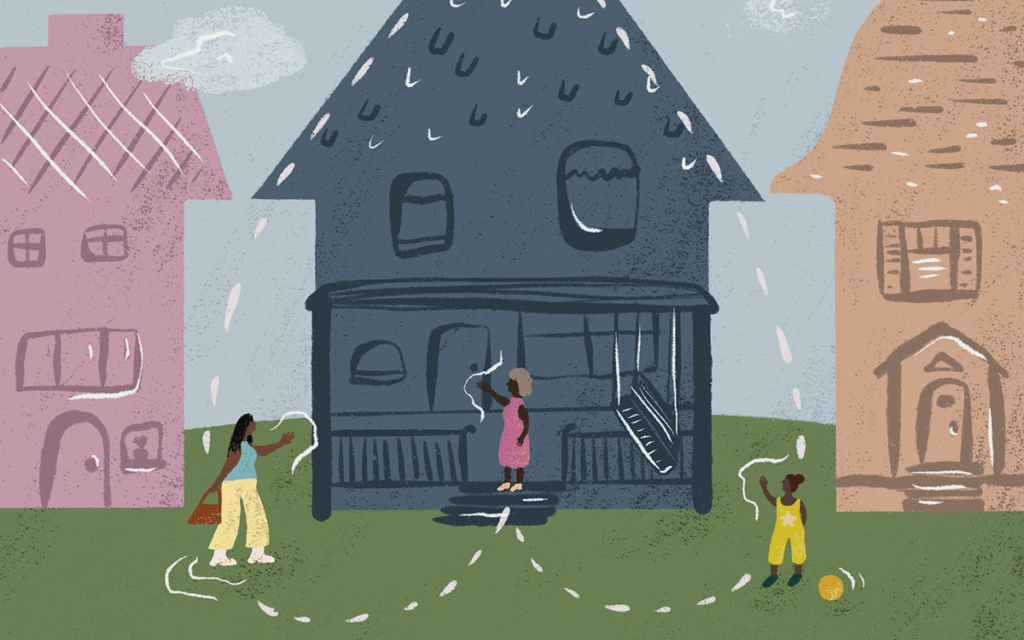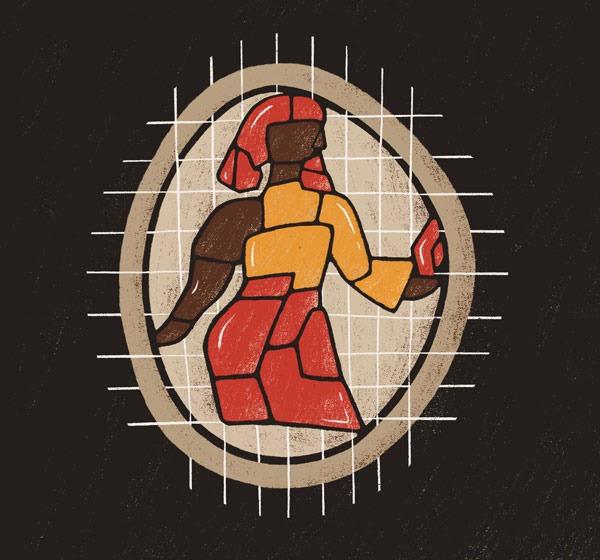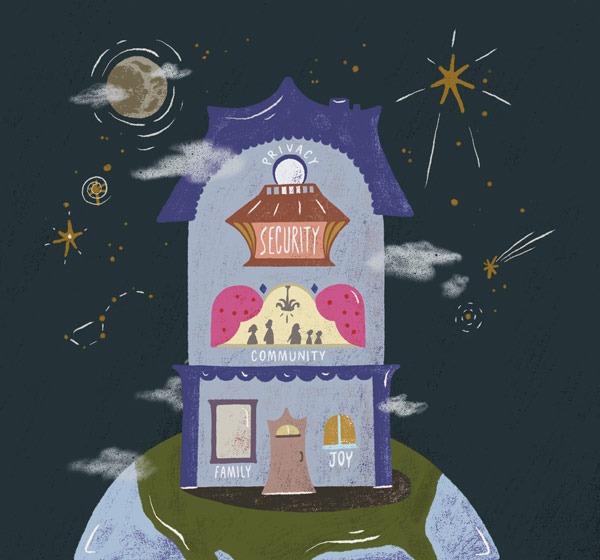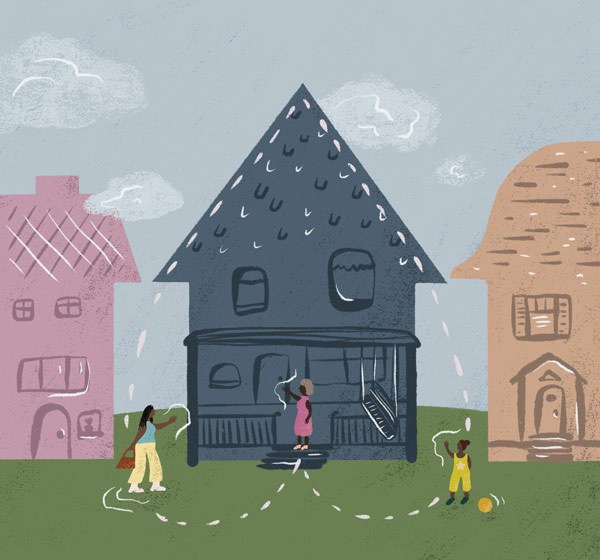
In the Locked Out: Black Women, Wealth, and Homeownership series, members of Insight Center, Springboard to Opportunities, and several expert co-authors connect the lived experiences, hopes, and dreams of low-income Black women and their perspectives on homeownership to the historic and current policies that fuel our exclusionary housing market—and its impact on health and wellbeing—to advocate for equitable housing solutions for Black women.
Over the course of this series, we have laid out the myriad ways that our housing markets fail Black women. From current discriminatory practices in the private lending market to historic exclusion from public home-buying programs, the effects of these inequitable practices and policies on Black women include a lack of wealth and an incalculable loss of mental and physical health.
The harms that Black women face in our housing market are the result of decisions made by the government and real estate industry to segregate housing markets, setting the stage for corporations to profit off Black women’s pain. Without understanding the decisions that got us here, we cannot build a housing system that is just and equitable.
A History of Racist Policies
Modern-day inequities in the housing market are rooted in exclusionary policies that embedded racism into the very bedrock of the US housing system. Shortly after the turn of the 20th century, real estate developers required prospective white home buyers to sign racist covenants that prevented these buyers from selling or renting housing to Black people. At the same time, real estate agents “steered” Black buyers and renters to areas that were designated—formally or informally—as Black neighborhoods.
In the 1930s, the federal government refused to insure mortgages in Black neighborhoods, a practice known as “redlining.” Simultaneously, the Federal Housing Administration subsidized new residential suburbs while stipulating that none of these new homes be sold to Black families. Private banks also redlined Black neighborhoods, denying loans to Black homeowners seeking to maintain their properties and causing building stock in many Black neighborhoods to deteriorate. The government’s new Public Works Administration (PWA) Housing Division then “routinely razed” these neighborhoods to build public housing projects that denied Black applicants. Even after passage of the 1968 Fair Housing Act, which prohibits discrimination in housing based on race, color, national origin, religion, sex, familial status, and disability, exclusionary zoning laws continued to offer “a loophole for discrimination,” keeping low-income people out of neighborhoods with more amenities and opportunity.

By locking Black homeowners out of such neighborhoods, US housing policies contributed significantly to the racial wealth gap and reduced economic opportunity for Black Americans while subsidizing wealth-building opportunities for white people. They also excluded Black families from access to high-quality public education. But the harms of these policy choices go deeper; they set up Black families for extraction.
From Racist Exclusion to “Predatory Inclusion”
Policies in the 1970s that purportedly encouraged Black homeownership resulted in what Dr. Keeanga-Yamahtta Taylor describes as “racist exclusion [giving] way to predatory inclusion.” When homes went into foreclosure, the government paid mortgage lenders in full, incentivizing real estate brokers and mortgage bankers to target poor Black families as poverty would likely drive such borrowers to fall behind on their mortgage payments. And because Black people were being sold overvalued homes—another strategy to squeeze as much profit out of Black borrowers as possible—lenders knew that they would profit from repayment until the borrowers could no longer bear the financial burden. They could then move on to extracting from the next poor Black family eligible for federal mortgage lending programs.
Given this sordid history, it is no surprise that during the 2000s housing bubble, lenders and Wall Street investors disproportionately targeted Black homebuyers—and especially Black women—for predatory subprime mortgages. Black women lost their homes and wealth while the banks that issued manipulative subprime loans made billions of dollars. In short, banks profited from racism while also, as it so happens, triggering a years-long economic recession.
While unscrupulous lenders siphoned off Black wealth, Black women paid the biggest price, and today, bankers continue targeting Black women for exploitative high-cost loans. They form part of system that fails to recognize Black women’s humanity and need for stability. As Black women have expressed, stable housing is essential to economic and personal security. Carol, a low-income Black woman in Clay County, GA, said having a home of her own after a lifetime of renting is her biggest dream: “Even if I don’t have lights, I have a roof over my head. I can lay my head in peace and not have to worry about someone telling me I have to get out.” Tiyonda, a Black mother who currently lives in subsidized housing in Jackson, MS, agrees: “It would mean peace for me. It’s something I really want to experience.”
Sign up for our free newsletters
Subscribe to NPQ's newsletters to have our top stories delivered directly to your inbox.
By signing up, you agree to our privacy policy and terms of use, and to receive messages from NPQ and our partners.
Toward Repair: Addressing Black Women’s Exclusion from Housing
We cannot expect a housing system that was built on predatory practices and anti-Blackness to work for Black women today. Small tweaks cannot tackle the vast inequities baked into the US housing market, nor can they make our society see that Black women’s housing security impacts Black people’s collective economic security. As a first step towards repairing the US housing system’s entrenched inequalities, we must address Black women’s exclusion from access to housing and reimagine our housing system to center Black women and their needs.
Confronting and rectifying these historic wrongs requires leading with two core principles: 1) reducing the outsized power of bankers and other lenders, which allowed them to get away with extractive practices such as predatory lending, and 2) demanding governments acknowledge that the system is broken and fix it. Regulating housing finance, curbing predatory lending, increasing public investment in housing, and ensuring that the country’s fair housing laws are fully enforced are just a few of the ways policymakers can hold the private sector to account. Policymakers should also pursue rent stabilization policies to stop skyrocketing housing costs and take on profiteering landlords who use inflation as an excuse to drive rents to unsustainable levels. Only by using all the policy tools at our disposal will we build a housing system that does not extract wealth from Black women.
Policymakers must also advance policies designed to empower Black women. For too long, Black women have been funneled into low-quality, low-wage jobs, denying them the security and stability that wealth accumulation brings. Policy solutions must use a “both, and” approach, focusing on programs that combine ways to build both income and wealth. Insight Center has laid out a framework, Generations Ahead, for creating such a policy. Similar efforts are being undertaken locally, such as Saint Paul’s CollegeBound Boost program, which combines a guaranteed income with college savings account investments.
A New Vision: Centering Black Women in Housing
Still, better policy choices will only get us so far. Ultimately, creating a just housing system must start with collectively creating a new vision, policies, and programs for housing that center Black women’s thoughts and experience. That means refining current policies to better target and uplift Black women. It also means treating housing as more than a commodity by listening to the experiences of Black women who describe a home as a place of safety, privacy, community, family, and joy.

What would our homes, neighborhoods, and cities look like if we centered Black women’s joy, dreams, and notions of safety? Efforts such as the Black Thought Project, co-designed by Alicia Walters and the Insight Center, offer a window into how grounding our policy solutions in Black women’s experiences can help us envision solutions. The Black Thought Project transforms public and private walls in Oakland, CA, into interactive art installations, providing Black people with community chalkboards to share and reflect on their perspectives. Black women’s responses to these walls touched on the importance of kinship networks and family, the harm caused by and distrust in government programs and policies, the pain of changing neighborhoods and gentrification, and the desire for financial and emotional safety.
Centering Blackness could also mean building a housing system that is structured around the village, re-envisioning the single-family house and city grids to better support kinship networks, which are integral to Black culture. Such a system would reflect the legacy of generations of Black families who make up the lifeblood of many American cities but are currently facing gentrification-induced displacement. Scholar Mehrsa Baradaran’s proposed 21st Century Homestead Act provides a framework for just this; it would combat racially discriminatory housing policy by transferring land to residents of small and medium-sized cities with high housing vacancies.
We see examples of such a holistic approach in the work of Moms 4 Housing, a grassroots group in Oakland, CA, comprised of unhoused and housing-insecure mothers. Moms 4 Housing describes its goal as “reclaiming housing for the community from speculators and profiteers.” In late 2019, several Black women affiliated with the organization took over a vacant home in the city for nearly two months before being evicted. Their direct action highlighted the unfairness of letting houses sit empty while families—particularly those headed by Black women—are denied homes, and it drew the support of several politicians and community advocates.
The group’s assertion that housing is a human right is part of a long history of organizing that places shelter at the center of fights for economic and gender justice. Sixty years ago, the National Welfare Rights Organization’s Johnnie Tillmon called for a guaranteed income as one way to provide Black women with the resources needed to survive. She pulled no punches with her assessment of the massive inadequacies of the existing social safety net: “The man, the welfare system, controls your money. He tells you what to buy, what not to buy, where to buy it, and how much things cost. If things—rent, for instance—really cost more than he says they do, it’s just too bad for you. He’s always right.”

For too long, Black women have been navigating a racist housing system that was designed to extract their wealth. Policymakers have failed to recognize housing as a right and confront the underlying racism and sexism in our housing system. Building a housing system that works for Black women can start with policy changes—whether regulations that safeguard people from exploitation or large-scale investments in housing—but cannot stop there. Rather, we need a new vision that brings Black women to the table and lets them shape an alternate future of housing that works for all.













